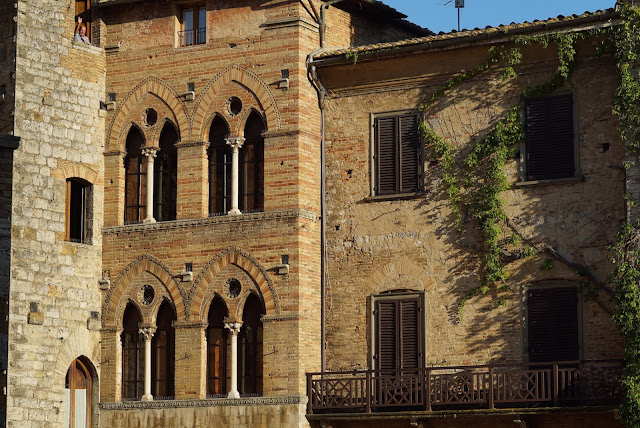A few of the towers:
Building with Gothic windows:
In what was the town hall, there are some interesting frescoes, including one about marriage:
A warning about the dangers of prostitutes?
There was also an amazing painting of the crucifixion, painted in 1260:
Detail:
Another painting with stunning color:
The church, the Collegiata, was also fascinating. Covered with frescoes, in this case depicting scenes from both the Old and New Testament. Unfortunately, no photos were allowed. So courtesy of the web...
After two weeks in Italy, I am in awe of the art and history that is there. Is there any other country with so much visible presence of history? Consider a town or city which can trace its street layout to the Roman streets laid out almost 2,000 years ago; what does it mean to be living amongst that history? Other countries might have an equally long history, but none, I think, with that history visibly present in daily life. And thinking about the frescoes that have been on the walls of churches for some 500 years, one can't help but think about Vancouver, where there are only shadows of any history that existed more than 125 years ago.














